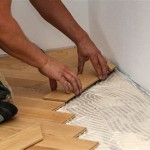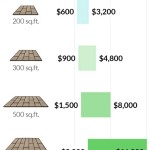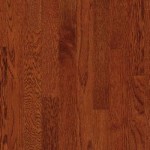Solid Wood Flooring Labour Cost: A Comprehensive Analysis
The installation of solid wood flooring is a significant investment that enhances the aesthetic appeal and value of a property. Beyond the material cost, the labor cost associated with installation represents a considerable portion of the overall expense. Understanding the factors that influence solid wood flooring labor costs is crucial for homeowners and contractors alike when budgeting and planning a flooring project.
This article delves into the various elements that contribute to the labor cost of installing solid wood flooring, providing a detailed explanation of typical pricing structures, regional variations, pre-installation requirements, and post-installation considerations. The intent is to provide a comprehensive overview to enable informed decision-making regarding solid wood flooring projects.
Factors Influencing Solid Wood Flooring Installation Labor Costs
Several key factors determine the labor costs associated with installing solid wood flooring. These factors encompass the complexity of the installation, the condition of the subfloor, the type of wood used, and the prevailing labor rates in a given region. A thorough assessment of these factors is necessary to accurately estimate the total cost of the project.
One of the primary determinants of labor cost is the method of installation. Solid wood flooring can be installed using several techniques, each requiring varying degrees of skill and time. The most common methods include nailing, gluing, and floating. Nailing is typically the most cost-effective method for above-grade installations over a wooden subfloor, while gluing is often preferred for concrete subfloors or areas with high moisture levels. Floating installations, which involve attaching planks together and not directly to the subfloor, are relatively less common for solid wood due to its inherent susceptibility to moisture-induced expansion and contraction.
The condition of the subfloor is another significant factor. A subfloor that is uneven, damaged, or not properly prepared will require additional labor to rectify. This may involve leveling the subfloor, repairing cracks, or applying a moisture barrier. These preparatory tasks add to the overall labor time and, consequently, the cost. Inadequate subfloor preparation can lead to flooring failures, such as squeaking, buckling, or unevenness, making it crucial to address any subfloor issues before commencing the flooring installation.
The type of wood used can also affect labor costs. Harder wood species, such as oak or maple, may require more effort to cut and nail than softer woods, potentially increasing installation time. Exotic wood species, which are often denser and more difficult to work with, can also contribute to higher labor costs. The width and length of the planks also play a role, with wider or longer planks generally being faster to install but potentially requiring more precise handling.
Regional variations in labor rates are a consistent determinant of project costs. Areas with a higher cost of living typically have higher labor rates for all types of construction work, including flooring installation. Urban areas tend to have higher labor costs compared to rural areas due to increased overhead and demand. It is advisable to obtain multiple quotes from local flooring contractors to compare pricing and ensure a fair and competitive rate.
Typical Pricing Structures for Solid Wood Flooring Installation
Flooring contractors typically employ one of two pricing structures for solid wood flooring installation: per-square-foot pricing or hourly rates. Per-square-foot pricing is the most common method, providing a clear and predictable cost based on the total area being covered. Hourly rates are less common for straightforward installations but may be used for complex projects or when unforeseen issues are anticipated.
Per-square-foot pricing generally includes the cost of labor for installing the flooring, but it may not include the cost of removing existing flooring, preparing the subfloor, or installing baseboards or moldings. These additional services are often quoted separately. It is essential to clarify what is included in the per-square-foot price to avoid unexpected costs later in the project.
The per-square-foot price can vary widely depending on the factors discussed earlier, such as the complexity of the installation, the condition of the subfloor, and the type of wood. As a general guideline, the labor cost for installing solid wood flooring can range from $3 to $8 per square foot, but this range can increase significantly for more complex projects or in areas with high labor rates. For example, intricate patterns or custom borders will inevitably increase the labor time and cost.
Hourly rates for flooring installers typically range from $50 to $100 per hour, depending on the contractor's experience, skill level, and location. Hourly rates may be more suitable for smaller projects where the total area is limited, or for projects involving significant subfloor preparation or intricate design elements. When using an hourly rate, it is important to obtain a detailed estimate of the total hours required to complete the project to avoid open-ended expenses.
It is recommended to obtain a written contract from the flooring contractor that clearly outlines the scope of work, the pricing structure, the payment schedule, and any guarantees or warranties offered. A well-defined contract protects both the homeowner and the contractor and helps to prevent misunderstandings or disputes during the project.
Pre-Installation Requirements and Their Impact on Labor Costs
The success of a solid wood flooring installation depends heavily on proper preparation. Pre-installation requirements include acclimatizing the wood, preparing the subfloor, and addressing any potential moisture issues. Failure to adequately address these requirements can lead to flooring failures and increased labor costs later on.
Acclimatizing the wood is a crucial step that allows the wood to adjust to the ambient temperature and humidity of the installation environment. Solid wood flooring is susceptible to expansion and contraction due to changes in moisture content. Acclimatization helps to minimize these effects and prevent warping, cupping, or gapping after installation. The wood should be stored in the room where it will be installed for several days, or even weeks, before installation. The duration of acclimatization depends on the wood species, the climate, and the relative humidity levels. Improper acclimatization can lead to significant problems and may require costly repairs or replacements, thereby increasing the overall project expense.
Preparing the subfloor is another critical step. The subfloor must be clean, level, and dry. Any existing flooring, such as carpet or vinyl, should be removed. Uneven areas should be leveled using a self-leveling compound or by sanding down high spots. Cracks or holes should be filled with a patching compound. A moisture barrier should be installed over concrete subfloors to prevent moisture from seeping into the wood. The cost of subfloor preparation can vary significantly depending on the condition of the existing subfloor. Severely damaged or uneven subfloors will require more extensive repairs, resulting in higher labor costs.
Addressing potential moisture issues is essential for preserving the longevity and integrity of solid wood flooring. Excessive moisture can cause the wood to swell, warp, or rot. Before installation, it is important to test the moisture content of both the wood and the subfloor. The moisture content of the wood should be within the range recommended by the manufacturer. The subfloor should also be tested for moisture using a moisture meter. If the moisture content is too high, it is necessary to take steps to reduce it, such as installing a vapor barrier or using dehumidifiers. Ignoring moisture issues can lead to significant problems and may void the manufacturer's warranty.
Proper pre-installation preparation can add to the initial labor costs but can save considerable money in the long run by preventing flooring failures and reducing the need for costly repairs or replacements. Homeowners should ensure that their flooring contractor thoroughly assesses the pre-installation requirements and provides a detailed plan for addressing them.
Post-Installation Considerations Affecting Overall Project Costs
After the solid wood flooring has been installed, there are several post-installation considerations that can affect the overall project costs. These considerations include the installation of baseboards and moldings, finishing and sealing the floor, and ongoing maintenance and care.
Baseboards and moldings are typically installed to conceal the gap between the flooring and the wall, providing a finished and aesthetically pleasing look. The labor cost for installing baseboards and moldings is usually quoted separately from the flooring installation cost. The cost can vary depending on the type of baseboards and moldings used, the complexity of the installation, and the length of the perimeter. Intricate profiles or custom designs will generally be more expensive to install. It is essential to factor in the cost of baseboards and moldings when budgeting for a solid wood flooring project.
Finishing and sealing the floor are crucial steps for protecting the wood and enhancing its appearance. Solid wood flooring is typically sanded and finished on-site after installation. The finishing process involves applying several coats of sealant or varnish to protect the wood from scratches, stains, and moisture. The labor cost for finishing and sealing the floor can vary depending on the type of finish used, the number of coats applied, and the size of the area. More durable finishes, such as polyurethane, tend to be more expensive but offer better protection. Oil-based finishes provide a richer, more natural look but may require more frequent maintenance.
Ongoing maintenance and care are essential for preserving the beauty and longevity of solid wood flooring. Regular sweeping and vacuuming are necessary to remove dirt and debris that can scratch the surface. Spills should be wiped up immediately to prevent staining. The floor may need to be refinished periodically to restore its original luster. The frequency of refinishing depends on the amount of traffic and the type of finish used. While ongoing maintenance costs are not typically included in the initial installation cost, they should be factored into the long-term cost of owning solid wood flooring.
Proper post-installation care and maintenance can prevent costly repairs and replacements, ensuring that the solid wood flooring retains its beauty and value for many years. Homeowners should follow the manufacturer's recommendations for cleaning and maintaining their flooring to maximize its lifespan.

Average Hardwood Flooring S In 2024 Forbes Home

How Much Should Wooden Flooring Cost In 2024 Checkatrade

Wood Flooring Guide 2024 How Much Does Wooden Cost

How Much Does Wooden Floor Installation Cost In 2024 Mybuilder

What Is The Cost Of Installing Hardwood Floors A You Can Afford

How Much Does Hardwood Flooring Cost 2024 Guide

Cost Of Installing Engineered Wood Flooring

How Much Does Wooden Floor Installation Cost In 2024 Mybuilder

How Much Does Flooring Installation Cost In 2024 Forbes Home

Wood Flooring Guide 2024 How Much Does Wooden Cost
Related Posts








